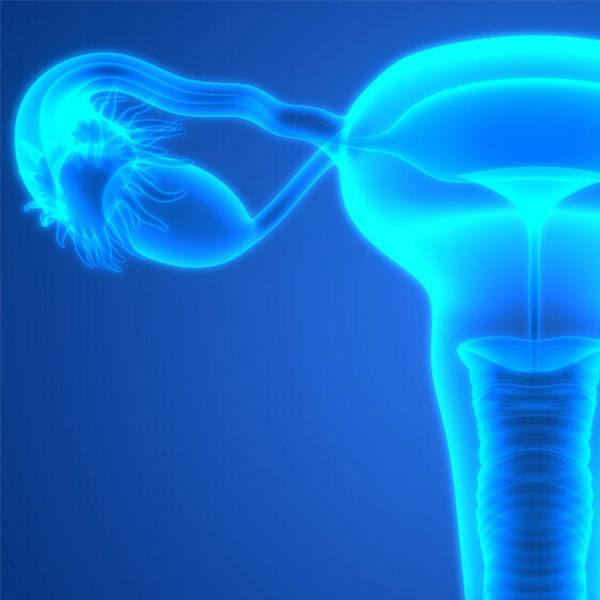-
Study Finds Trigger of Paralysis Complication in Neuromyelitis Optica
Once thought to be a type of multiple sclerosis, the condition neuromyelitis optica is a rare autoimmune disorder. The body’s immune system, via auto-antibodies, targets one of its own brain and spinal cord cell types, called astrocytes. These cells allow water in and out of the brain through a protein channel. Damage to that channel causes extensive downstream complications, such as blindness, weakness or paralysis, which may flair up and resolve or may be permanent.
In 2002, researchers at Mayo identified the unique features of neuromyelitis optica. In 2004, researchers from Mayo’s Neuroimmunology Laboratory defined it as a unique disease. Mayo’s blood test for diagnosing the disease is used through the world, and now, the research lab of Mayo neuroscientist Long-Jun Wu, Ph.D., has again expanded knowledge about this condition.

Dr. Wu’s lab focuses on brain cells called microglia. These cells find, breakdown and clean up cellular messes. In a new article, published in The Journal of Clinical Investigation, the authors show that soon after astrocytes are attacked by auto-antibodies, the cells interact physically with microglia – but aren’t injured by the microglia – and that this interaction is a critical step in development of neuromyelitis optica-related paralysis.
“We’ve known for a while that microglia are highly activated in the disease process, however, it was assumed that that activation reflected the brain’s attempt to mop up damage caused by the attack on astrocytic glial cells,” says Dr. Wu. “We have now shown, in live mice, that astrocytes activated by the binding of the NMO [neuromyelitis optica] antibody attract microglia but aren’t damaged by them at that time. It is that interaction that causes neuronal dysfunction which impairs movement.”
Although investigators have observed that microglia cells are activated in patients with neuromyelitis optica, this is the first study to show microglia cells are required for the development of the diseases. Early in the disease process, cross-talk occurs between astrocytes and microglia, and that cross-talk eventually leads to the complication of paralysis.

Image shows the early interaction between microglia (green) and an astrocyte (yellow), that is critical for triggering neuronal damage and motor dysfunction in a mouse model of the disease.
This finding was possible due to a new mouse model developed in Dr. Wu’s lab, and collaboration with Vanda Lennon, M.D., Ph.D., the founder of the Neuroimmunology Laboratory. In this model, glial cells can be tracked as they interact with other cells. This allowed the researchers to interpret cellular processes, not just snap shots as with traditional imaging of fixed tissue. With the knowledge of how the condition progresses, they were able to see the astrocyte-microglia communication and show that the microglial cells are critical in damaging motor nerve cell function.
“Our analysis in this animal model indicates suppression of microglia in the early stage of NMO can significantly reduce the motor dysfunction induced by the NMO antibody,” says Dr. Wu. The lab’s next steps will address the role of other immune cells as well as the step-by-step evolution of brain pathology using the mouse model. “We need to better understand finer details of the sequence of events culminating in irreversible NMO pathology,” says Dr. Wu.
The team also hopes to extend their successful strategy to other autoantibody-mediated autoimmune neurological disorders.

In addition to Drs. Wu and Lennon, other Mayo authors are Tingjun Chen, M.D., Ph.D., Yong Liu, Ph.D., Dale Bosco, Ph.D., and Min-Hee Yi, Ph.D. Author Shihui Wei, M.D. is from the Chinese PLA General Hospital in Beijing, China. The work also benefited from the strong support by Mayo Clinic’s Department of Neurology, led by Claudia Lucchinetti, M.D., and the Mayo Clinic Center for Multiple Sclerosis and Autoimmune Neurology led by Sean Pittock, M.D. The study was also supported by a recently awarded federal grant from National Institute of Neurological Disorders and Stroke to Drs. Wu and Lennon.
Interested in reading more?
- To read more how neuromyelitis optica was identified as different from other diseases, read “Autoimmune Disorders Unmasked.”
- To read about Dr. Wu’s previous microglia findings, read “Cellular “Cleaners” More Active in Quiet Brains.”
- If you are looking for a community to virtually meet people living with autoimmune disease, head over to Mayo Clinic Connect.







